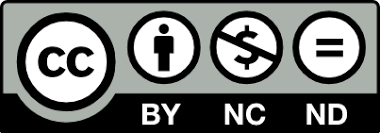Pediatric Acute-onset Neuropsychiatric Syndrome (PANS) in an adolescent undergoing treatment for B-cell acute lymphoblastic leukemia: A case report
Published
How to Cite
Issue
Section
License
Copyright (c) 2025 Revista de Psiquiatría Infanto-Juvenil

This work is licensed under a Creative Commons Attribution-NonCommercial-NoDerivatives 4.0 International License.
DOI:
https://doi.org/10.31766/revpsij.v42n1a5Keywords:
PANS (Pediatric Acute-onset Neuropsychiatric Syndrome), limbic encephalitis, obsessive-compulsive, hepatopathy, autoinmuneAbstract
Introduction: Pediatric Acute-onset Neuropsychiatric Syndrome (PANS) is a recent diagnostic category developed to encompass a broader range of clinical presentations than Pediatric Autoimmune Neuropsychiatric Disorder Associated with Streptococcus (PANDAS). PANS includes symptoms such as the sudden onset of Obsessive-Compulsive Disorder (OCD) and other severe neuropsychiatric symptoms. Case Presentation: This case involves a 15-year-old adolescent with B-cell acute lymphoblastic leukemia who developed a complex neuropsychiatric syndrome following chemotherapy treatment. The patient presented with symptoms including poor appetite, elevated bilirubin and liver enzymes, along with obsessive-compulsive symptoms, anxiety, irritability, and psychotic episodes. After administering various treatments, including antibiotics, antivirals, and psychotropic medications, there was a significant improvement in both neuropsychiatric and hepatic symptoms. Discussion: This case presents a diagnostic challenge, as the symptoms could be consistent with several conditions, including limbic encephalitis and other neuropsychiatric disorders. Viral infections and autoimmune alterations were ruled out through specific studies, suggesting that the neuropsychiatric symptoms might be related to an autoimmune or inflammatory response in the context of chemotherapy treatment. Conclusions: This case highlights the importance of a multidisciplinary approach in diagnosing and managing PANS, emphasizing the need to rule out other disorders reaching a definitive diagnosis. The patient's positive evolution following targeted treatment supports the hypothesis of an underlying autoimmune or inflammatory etiology.
Downloads
References
Wilbur C, Bitnun A, Kronenberg S, Laxer RM, Levy DM, Logan WJ, et al. PANDAS/PANS in childhood: Controversies and evidence. Paediatr Child Health. 2019;24(2): 85-91. https://doi.org/10.1093/pch/pxy145 DOI: https://doi.org/10.1093/pch/pxy145
Chang K, Frankovich J, Cooperstock M, Cunningham MW, Latimer ME, Murphy TK, et al. Clinical evaluation of youth with pediatric acute-onset neuropsychiatric syndrome (PANS): Recommendations from the 2013 PANS consensus conference. J Child Adolesc Psychopharmacol. 2015 Feb;25(1): 3-13. https://doi.org/10.1089/cap.2014.0084 DOI: https://doi.org/10.1089/cap.2014.0084
Swedo SE, Leckman JF, Rose NR. From Research Subgroup to Clinical Syndrome: Modifying the PANDAS Criteria to Describe PANS (Pediatric Acute-onset Neuropsychiatric Syndrome). Pediatr Therapeut. 2012;2: 2. https://doi.org/10.4172/2161-0665.1000113 DOI: https://doi.org/10.4172/2161-0665.1000113
Endres D, Pollak TA, Bechter K, Denzel D, Pitsch K, Nickel K et al. Immunological causes of obsessive-compulsive disorder: is it time for the concept of an "autoimmune OCD" subtype?. Transl Psychiatry. 2022;12(1): 5. https://doi.org/10.1038/s41398-021-01700-4 DOI: https://doi.org/10.1038/s41398-021-01700-4
Xu, J., Frankovich, J., Liu, R. J., Thienemann, M., Silverman, M. et al. Elevated antibody binding to striatal cholinergic interneurons in patients with pediatric acute-onset neuropsychiatric syndrome. Brain, Behavior, and Immunity. 2024;22: 241-55. https://doi.org/10.1016/j.bbi.2024.07.044 DOI: https://doi.org/10.1016/j.bbi.2024.07.044
Sigra S, Hesselmark E, Bejerot S. Treatment of PANDAS and PANS: a systematic review. Neurosci Biobehav Rev. 2018;86: 51-65. https://doi.org/10.1016/j.neubiorev.2018.01.001 DOI: https://doi.org/10.1016/j.neubiorev.2018.01.001
Programa Español de Tratamiento en Hematología (PETHEMA). Protocolo para el tratamiento de la leucemia aguda linfoblástica BCR:ABL1 negativa en adultos (Protocolo LAL-2019). 2023.
Sadlonova M, Duque L, Smith D, Madva EN, Amonoo HL, Vogelsang J, Staton SC, von Arnim CAF, Huffman JC, Celano CM. Pharmacologic treatment of delirium symptoms: A systematic review. Gen Hosp Psychiatry. 2022;79: 60-75. https://doi.org/10.1016/j.genhosppsych.2022.10.010 DOI: https://doi.org/10.1016/j.genhosppsych.2022.10.010
Tüzün E, Dalmau J. Limbic encephalitis and variants: classification, diagnosis and treatment. Neurologist. 2007 Sep; 13(5): 261-71. https://doi.org/10.1097/NRL.0b013e31813e34a5 DOI: https://doi.org/10.1097/NRL.0b013e31813e34a5
Bataller L, Kleopa KA, Wu GF, Rossi JE, Rosenfeld MR, Dalmau J. Autoimmune limbic encephalitis in 39 patients: immunophenotypes and outcomes. J Neurol Neurosurg Psychiatry. 2007 Apr;78(4): 381-5. https://doi.org/10.1136/jnnp.2006.100644 DOI: https://doi.org/10.1136/jnnp.2006.100644
Finelli PF. Autoimmune Limbic Encephalitis With GAD Antibodies. Neurohospitalist. 2011 Oct;1(4): 178-81. https://doi.org/10.1177/1941875211413135. DOI: https://doi.org/10.1177/1941875211413135
Montoya-Orozco P. A., Moreno-Cuadros A. L. Papel del ácido ursodesoxicólico en 40 años de tratamiento para la colangitis biliar primaria. Hepatología. 2023;4(2): 152-64. https://doi.org/10.59093/27112322.174 DOI: https://doi.org/10.59093/27112322.174
Patel S, Keating BA, Dale RC. Anti-inflammatory properties of commonly used psychiatric drugs. Front Neurosci. 2023;16: 1039379. https://doi.org/10.3389/fnins.2022.1039379 DOI: https://doi.org/10.3389/fnins.2022.1039379
Shin H, Song JH. Antipsychotics, chlorpromazine and haloperidol inhibit voltage-gated proton currents in BV2 microglial cells. Eur J Pharmacol. 2014;738: 256-62. https://doi.org/10.1016/j.ejphar.2014.05.049. DOI: https://doi.org/10.1016/j.ejphar.2014.05.049
Silverman M, Frankovich J, Nguyen E, Leibold C, Yoon J, Freeman Jr GM et al. Psychotic symptoms in youth with Pediatric Acute-onset Neuropsychiatric Syndrome (PANS) may reflect syndrome severity and heterogeneity. J Psychiatr Res. 2019;110: 93-102. https://doi.org/10.1016/j.jpsychires.2018.11.013. DOI: https://doi.org/10.1016/j.jpsychires.2018.11.013









 © 2021 AEPNyA Todos los derechos reservados
© 2021 AEPNyA Todos los derechos reservados
